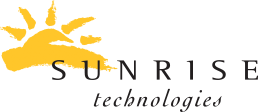
Renfro Brands' Digital Transformation with Sunrise
Presented by Sunrise Technologies and The American Apparel and Footwear Association
Learn how this over-100-year-old organization leveraged technology to transform its operations. Renfro Brands is the leading designer, manufacturer, and marketer of quality socks and legwear products. Founded in 1921 in Mt. Airy, North Carolina, today Renfro Brands can be found around the globe. During this session, Renfro Brands SVP and CIO Mike Everly and Sunrise Consulting Director Alex Hunt will discuss the Renfro's Dynamics 365 project and cloud business transformation. Viewers will learn:
- Why Renfro Brands decided to embark on a digital transformation project
- How the implementation changed the company's operations
- The experience working with Sunrise as both an implementation partner and trusted advisor

WHAT'S NEXT?
Want to take the next steps and see how Dynamics 365 and Sunrise can help your organization?


